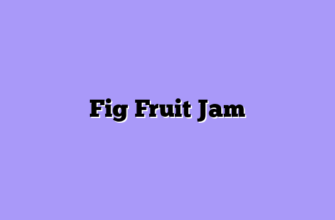After growing guava (Psidium guajava) for over a decade, I’ve perfected the art of making jam without commercial pectin. What many people don’t realize is that these wonderful fruits, known as amrood in Hindi or bayabas in Filipino, naturally contain enough pectin to create a perfect set. Let me share my tried-and-true method that transforms these tropical gems into delicious preserves.
Selecting the Perfect Fruit
The success of your jam begins with choosing the right fruit. I’ve found that slightly underripe yellow guava (P. guajava) works best, as they contain more natural pectin than fully ripe ones. When I walk through my orchard selecting fruit for jam, I look for kuwawa (Hawaiian name) that are just beginning to soften but still maintain their firmness.
Selection Criteria:
- Firm but slightly yielding when pressed
- Light yellow to greenish color
- Fresh, sweet aroma
- No blemishes or soft spots
- Medium to large size
Basic Recipe Components
Here’s my foolproof recipe that I’ve developed over years of experimentation:
Ingredients:
- 4 pounds fresh guava (about 12-15 medium fruits)
- 3 cups granulated sugar
- 1/4 cup lemon juice
- 1/4 cup water
Equipment Needed:
- Large, heavy-bottomed pot
- Food mill or fine-mesh strainer
- Wooden spoon
- Canning jars and lids
- Candy thermometer
- Clean kitchen towels
Preparation Process
The key to perfect goyave (French name) jam lies in the preparation:
- Fruit Preparation:
- Wash fruits thoroughly
- Cut into quarters
- Remove any blemished parts
- Leave seeds in (they contain pectin)
- Initial Cooking:
- Place cut fruit in pot
- Add water
- Simmer until very soft (about 20-25 minutes)
- Mash gently while cooking
The Straining Method
This is where the magic happens – transforming fruit into smooth, seed-free pulp:
Straining Steps:
- Pass cooked fruit through food mill
- Return pulp to pot
- Discard seeds and tough parts
- Measure pulp (you should have about 6 cups)
Pro tip: Don’t discard the strained solids immediately – give them a second pass through the mill to extract every bit of peachy-pink goodness.
The Cooking Process
Now comes the part that requires patience and attention:
Cooking Stages:
- Initial Mixing:
- Add sugar and lemon juice to pulp
- Stir until sugar dissolves
- Bring to a boil over medium-high heat
- The Critical Phase:
- Maintain a steady boil
- Stir frequently to prevent sticking
- Watch for thickening
- Cook until mixture reaches 220°F (105°C)
- Testing for Doneness:
- Place a small plate in freezer
- Drop a spoonful of jam on cold plate
- Wait 30 seconds
- Push with finger – should wrinkle and not flow back
Troubleshooting Common Issues
Even experienced jam makers face challenges. Here’s how I handle common problems:
Problem-Solving Guide:
- Too Runny:
- Cook longer
- Add more underripe fruit pulp
- Reduce temperature and simmer longer
- Too Thick:
- Add small amounts of water
- Reduce cooking time in next batch
- Adjust sugar ratio
Canning and Storage
Proper storage ensures your jam lasts through the seasons:
Canning Steps:
- Sterilize jars and lids
- Fill hot jars leaving 1/4 inch headspace
- Wipe rims clean
- Apply lids and bands
- Process in boiling water bath for 10 minutes
Storage Tips:
- Keep sealed jars in cool, dark place
- Refrigerate after opening
- Use within one year
- Check seals before using
- Label with date and batch number
Flavor Variations
While traditional guava jam is delicious, I love experimenting with flavors:
Popular Combinations:
- Guava-Ginger:
- Add 2 tablespoons fresh grated ginger
- Spiced Guava:
- Add 1 cinnamon stick
- 3 whole cloves
- 1 star anise
- Tropical Blend:
- Add passion fruit pulp
- Lime zest
- Vanilla bean
Remember, making jam without pectin takes a bit longer, but the result is a more natural, fruit-forward preserve that lets the true flavor of your guava shine through. The process might seem daunting at first, but like anything worthwhile in life, it just takes practice and patience.
Think of it as a dance between fruit, sugar, and heat – once you learn the steps, you’ll never want to use commercial pectin again. The satisfaction of creating a perfectly set jam using nothing but the fruit’s natural properties is truly unmatched.








